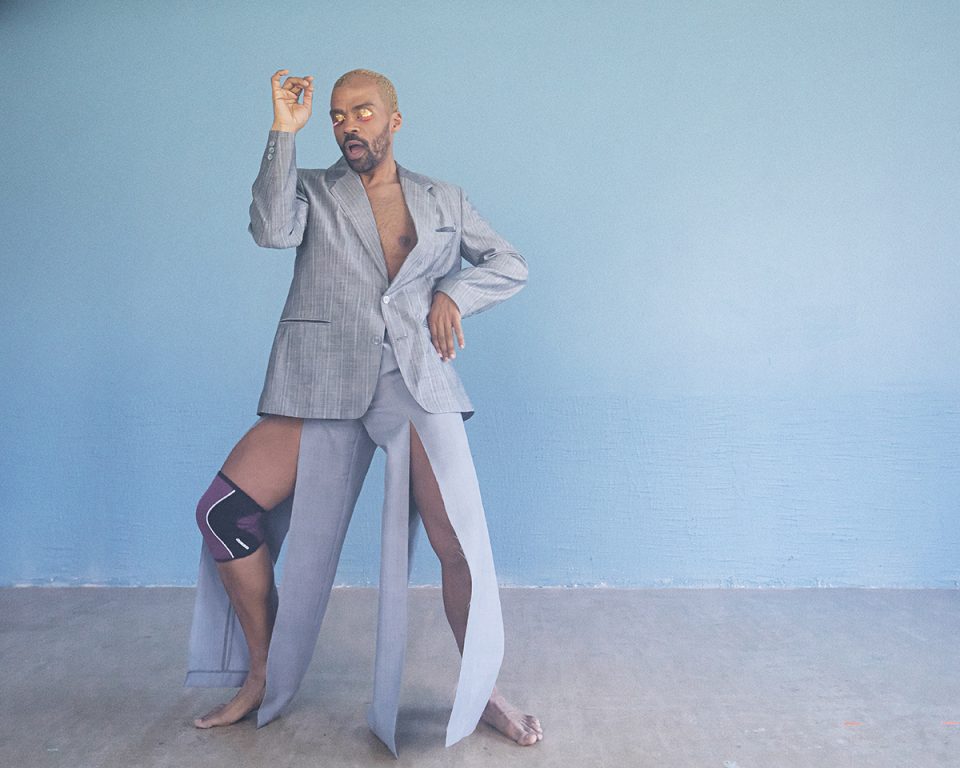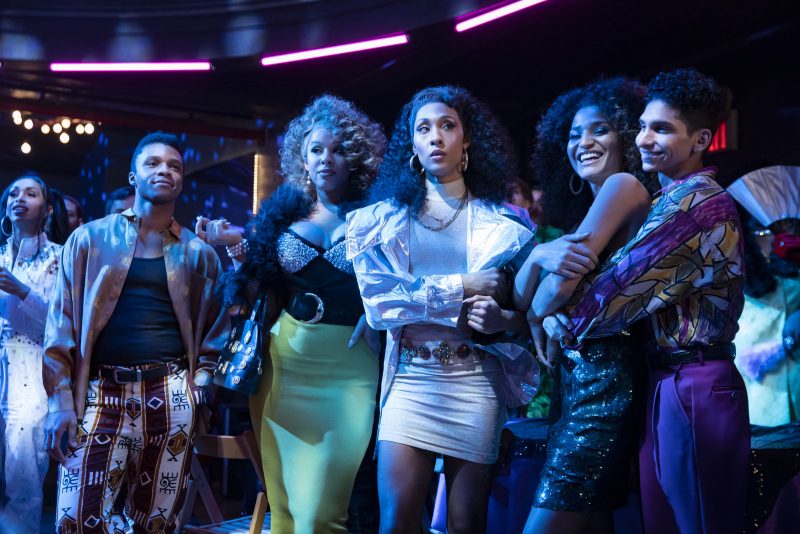We see you King – moving from shame towards new kinds of stories

According to statistics, sexual and gender minorities have a minimal role in Finnish films and series. Jani Toivola writes how safer spaces for diverse filmmakers can set creativity free and enable new kind of storytelling. The article is part of our Diversity in the Film Industry series.
Writer: Jani Toivola
Translation: Marjo Pipinen
Image: Pietari Purovaara
I browse through Instagram on the morning after the Oscars. I’ve just taken my 7-year-old daughter to school. I come across a picture of the openly gay British actor Colman Domingo on the Red Carpet of the Oscars. He is dressed head-to-toe in a hot pink suit. The picture is on a profile that lifts up Black and Brown gay men and love between men. The caption says, “We see you King.”
I am moved by the image, the text and the solidarity there. How a human life really becomes real only when it is illustrated and has words. And how their value is clearest to those who have experienced the feeling of not having any words. Of not seeing the images.
I feel like I myself become visible as I look at the image, although its reality is far from my own. It manages to feel close. To show that Black queerness is respected, powerful and central. That it is not alone or theoretical, but that it has its own story to tell.
The picture creates a passing window between the subject and the world surrounding it. I think about all those people who place themselves behind the image. As part of a community. Especially those whose lives are reflected in the image. I think about change and life being liberated and the new stories that are born out of that liberation, stories that help us understand and find release from the silencing of the past. The shame of it and the narrow image of life shaped by it. The stories that sketch new visions of the future. And how that has always been one the important roles of art.
There are more pictures like it nowadays, and yet not enough. There are more stories behind the pictures as well. Films and series that reflect the lives of people like me. There are stories and storytellers who are openly part of the LGBTIQ community. Unfortunately, though, we still have to look for those stories outside of the Finnish borders and language. It is still very rare that the stories of sexual and gender minorities would be a part of our cultural psyche.
IN OCTOBER 2020, AUDIOVISUAL Producers Finland APFI published a statistical research looking into casting and different groups of people in domestic films and series released in 2019. The statistics were gathered by film and TV students of the Metropolia University of Applied Sciences. The research was led and analysed by Milja Nieminen.
The statistics show that in the films and series released in 2019, white, cis-gender, straight and able-bodied characters made up a total of 90.6% of all characters. Out of the remaining characters, 6.3% were BIPOC, 2.3% were members of sexual minorities, 0.07% were members of gender minorities and 0.4% were characters with disabilities.
Most of the roles on offer were very small, with few scenes or lines and no significant impact on the narrative as a whole. Their stories went along stereotypical lines and the minority status played a major role in the stories of the characters.
The numbers are quite clear. Sexual and gender minorities comprised 2.37% of the roles. If you look at last or this year, there might be some progress, but I dare say it is not significant. It is also good to remember that a person’s identity rarely consists of just one characteristic, which adds to the layers of invisibility.
IT IS NOT A QUESTION OF INDIVIDUAL characters, however, but a wider issue of what kinds of stories we tell and with whose voice. It is a question of authorship and agency, both in front of the camera and behind it. It is about the will to create systematic steps for change. And it is not enough to say that all stories are welcome, or that the industry always wants great stories. We have to acknowledge that our idea of what makes an interesting story worth telling is shaped by the current situation.
Where to start when hardly anything has been told so far? In general, our ideas and images of love, relationship, growing up, getting old, humour, fear, pain and death are defined by the hetero norm. It is interesting to think about how the narrative and its patterns are affected when new stories, storytellers and points of view emerge.
Do love, a marriage crisis or the pains of a reconstituted family look the same with a minority point of view? What type of experience or resources does it require from those who are making the decisions and developing the stories to make something new possible? Something honest and comprehensive that doesn’t just tick the required boxes but also has the depth that doesn’t pale in comparison to other content.
For many, the road to those tables where the decisions are made is long and the threshold is high. It can be hard to trust that those who have the power also have real understanding and will, or that you are even allowed to step in. How does a producer read a love story between two men? Can they recognize its clearest nuances and shades of humanity? Do they feel confident that it could attract a larger audience?
All of this is connected to an idea of a safe space. We must have courage to look at the environments where films and series are being developed at the moment. Are they open, welcoming and safe for all? What is it like to approach a production company as a transgender writer? We should not be afraid of the idea of safety. It simply means that everyone should have the best possible means to make the kind of art that is true to them. A lot of uncertainties still remain. That is part of creativity. But at least we would all have the same starting point.

From the series POSE / HBO Nordic
IT HAS BEEN INTERESTING TO follow the career of the openly gay producer Ryan Murphy who has become one of Hollywood’s most influential producers in recent years. He rose to fame with Glee and has since produced and developed numerous successful series. One way or another, most of his series center on the LGBTIQ community, queer culture and its phenomena and references, which are a source of inspiration for his stories.
Thanks to a producer like him, many stories have been told for the first time and also history has been seen in a different light. The series POSE, developed by him, is about New York in the 1980s, the ballroom culture, HIV coming to the US and the politics of the time. Several trans people have leading roles, and they are behind the camera as well.
The production is in many ways an example of a new kind of authorship, and first and foremost of new structures. It shows how just one person’s strong vision and will can take us far. It has been amazing to see how the actors and other people from the show have moved on to new productions and have thus been able to get their foot in the door in Hollywood.
My background is in acting and already at the start of my career I noticed that as an actor, I had to work more than others. This demand didn’t come from outside but within me. Rooted in me was this idea of the male gender and the male actor on stage which was always and without exception heterosexual. A certain kind of hetero masculinity seemed to be the starting point and the presumption behind everything. I thought I needed to diminish everything gay-related in me before stepping on stage or in front of the camera, and on top of that, to begin with embodying “straight” gestures and mannerisms and only then start building the character.
The mission was impossible and yet I felt like I had no choice. This spring, I was a thesis examiner for a male actor who brilliantly studied this same theme and the liberation from norms. What are all the situations where we have presumptions about professionality that is, for example, straight and white?
I AM AN INSATIABLE ROMANTIC and I’ve loved romantic comedies for as long as I can remember. A time and again I’ve lived those great emotions on screen through the love between a woman and a man. For a long time, I didn’t even question it. I diminished myself and embraced the big emotions as if they didn’t have anything to do with me.
Those few films about love between men that I have seen have torn me inside out. A rare treat, but so full and plenty once you reach it. When all your life you’ve learned how to be a person through people who don’t look like you, their stories become a mirror even if the mirror image looks like someone else. You easily become a stranger to yourself, and distant both to you and to people around you.
In the midst of it all, it is a conflicting feeling. You want to see stories and life that is about something more than just homosexuality. And still the desire to see you and your own life is immense. I long for a direct dialogue between the story and myself. I long for feeling included in our culture and its psyche. I long for being included in narratives and images. I long for stories about the LGBTIQ community, about its history and hardships. About its originality and its ordinariness. Be it a gay man dragging a sleepy kid to school too early in the morning, grumpy and strained by life.
Jani Toivola is an actor, writer and speaker.
